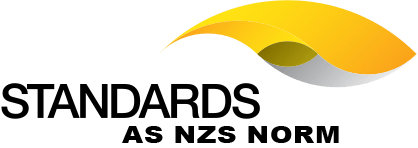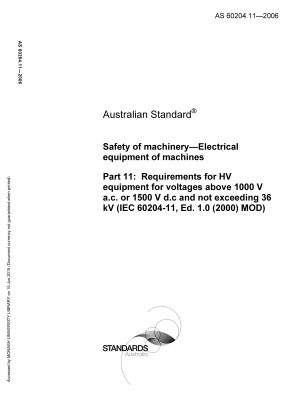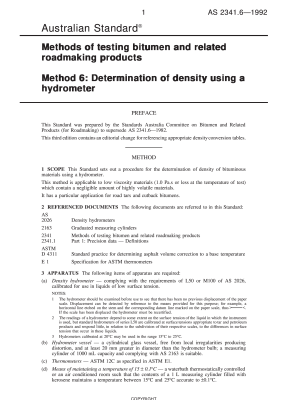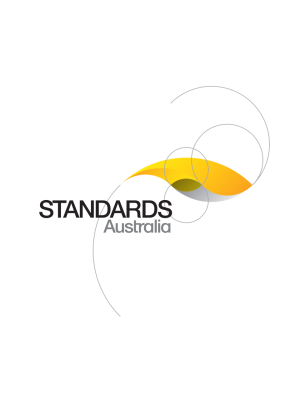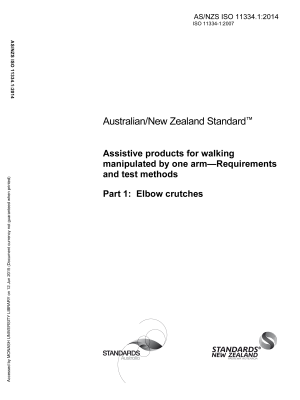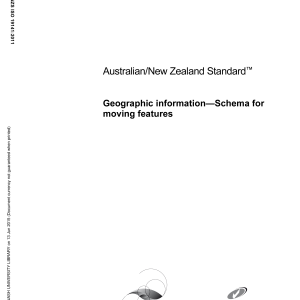🔍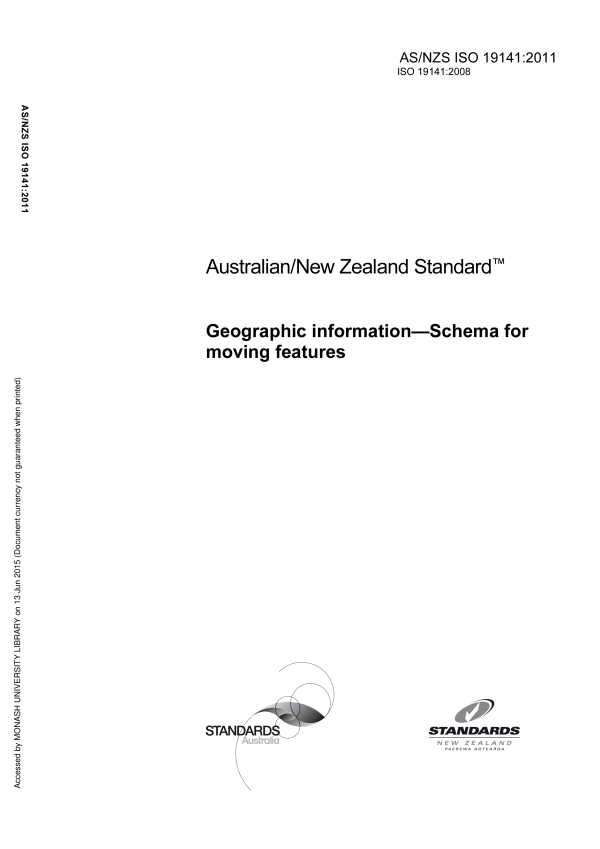

Purchase the full subscription package now and enjoy a 40% discount, along with free updates for future editions.
AS/NZS ISO 19141:2011
$242.18
Geographic information – Schema for moving features
This Standard defines a method to describe the geometry of a feature that moves as a rigid body. Such movement has the following characteristics; The feature moves within any domain composed of spatial objects as specified in ISO 19107. The feature may move along a planned route, but it may deviate from the planned route. Motion may be influenced by physical forces, such as orbital, gravitational, or inertial forces. Motion of a feature may influence or be influenced by other features.
Table of contents
Header
About this publication
Preface
Introduction
1 Scope
2 Conformance
2.1 Conformance classes
2.1.1 Introduction
2.1.2 Purpose
2.1.3 Complexity
2.2 Requirements
3 Normative references
4 Terms, definitions, and abbreviated terms
4.1 Terms and definitions
4.2 Abbreviated terms
5 Package – Moving Features
5.1 Semantics
5.2 Package structure
5.3 Class hierarchy
6 Package – Geometry Types
6.1 Package semantics
6.2 Type – MF_OneParamGeometry
6.2.1 Class semantics
6.2.2 Inheritance from GM_Object
6.2.3 Attribute – beginDomain
6.2.4 Attribute – endDomain
6.2.5 Operation – leafGeometry
6.2.6 Operation – trajectory
6.2.7 Operation – prism
6.3 Type – MF_TemporalGeometry
6.3.1 Class semantics
6.3.2 Inheritance from MF_OneParamGeometry
6.3.3 Operation – leafGeometry
6.3.4 Operation – trajectory
6.3.5 Operation – startTime
6.3.6 Operation – endTime
6.3.7 Operation – nearestApproach
6.3.8 Operation – intersection
6.4 Type – MF_Trajectory
6.4.1 Class semantics
6.4.2 Inheritance from MF_OneParamGeometry
6.4.3 Inheritance from GM_Curve
6.4.4 Attribute – pathGeometry
6.4.5 Attribute – graphParameterToPoint
6.4.6 Attribute – graphParameterToMeasure
6.4.7 Operation – leaf
6.4.8 Operation – leafGeometry
6.4.9 Operation – prism
6.4.10 Operation – parameterToMeasure
6.4.11 Operation – positionAtParameter
6.5 Type – MF_TemporalTrajectory
6.5.1 Class semantics
6.5.2 Inheritance from MF_Trajectory
6.5.3 Inheritance from MF_TemporalGeometry
6.5.4 Attribute – beginDomain
6.5.5 Attribute – endDomain
6.5.6 Attribute – graphTimeToPoint
6.5.7 Attribute – graphTimeToVelocity
6.5.8 Attribute – graphTimeToAcceleration
6.5.9 Attribute – graphTimeToDistance
6.5.10 Attribute – graphTimeToCumulativeDistance
6.5.11 Operation – pointAtTime
6.5.12 Operation – timeAtPoint
6.5.13 Operation – velocity
6.5.14 Operation – acceleration
6.5.15 Operation – timeToDistance
6.5.16 Operation – timeAtDistance
6.5.17 Operation – cumulativeDistanceAtTime
6.5.18 Operation – timeAtCumulativeDistance
6.5.19 Operation – nearestApproach
6.5.20 Operation – subTrajectory
6.5.21 Operation – timeToMeasure
6.5.22 Operation – positionAtTime
6.5.23 Operation – offsetAtTime
6.5.24 Operation – secondaryOffsetAtTime
6.5.25 Operation – measureAtTime
6.6 Class – MF_PositionExpression
6.6.1 Class semantics
6.6.2 Inheritance from LR_PositionExpression
6.6.3 Association Role – secondaryOffset
6.7 Type – MF_SecondaryOffset
6.7.1 Class semantics
6.7.2 Attribute – offsetVector
6.8 Type – MF_MeasureFunction
6.8.1 Class semantics
6.8.2 Attribute – graphOfMeasure
6.8.3 Optional attribute – graphOfOffset
6.8.4 Optional attribute – graphOfSecondaryOffsets
6.8.5 Attribute – geometry
6.8.6 Attribute – range
7 Package – Prism Geometry
7.1 Package structure
7.2 CodeList – MF_GlobalAxisName
7.2.1 Class semantics
7.2.2 Attribute – tangent
7.2.3 Attribute – backTangent
7.2.4 Attribute – bearing
7.2.5 Attribute – up
7.2.6 Attribute – down
7.2.7 Attribute – right
7.2.8 Attribute – left
7.2.9 Attribute – axis1
7.2.10 Attribute – negativeAxis1
7.2.11 Attribute – axis2
7.2.12 Attribute – negativeAxis2
7.2.13 Attribute – axis3
7.2.14 Attribute – negativeAxis3
7.3 Type – MF_LocalGeometry
7.3.1 Class semantics
7.3.2 Inheritance from GM_Object
7.3.3 Attribute – origin
7.3.4 Optional attribute – axis
7.4 Type – MF_PrismGeometry
7.4.1 Class semantics
7.4.2 Inheritance from MF_TemporalGeometry
7.4.3 Association Role – originTrajectory
7.4.4 Attribute – globalAxis
7.4.5 Optional attribute – controlOrientation
7.4.6 Operation – geometryAtTime
7.4.7 Operation – localCoordinateSystem
7.4.8 Operation – rotationAtTime
7.5 Type – MF_RigidTemporalGeometry
7.5.1 Class semantics
7.5.2 Inheritance from MF_PrismGeometry
7.5.3 Inheritance from MF_TemporalTrajectory
7.5.4 Attribute – baseGeometry
7.6 Type – MF_RotationMatrix
7.6.1 Class semantics
7.6.2 Attribute – axis
7.7 Type – MF_TemporalOrientation
7.7.1 Class semantics
7.7.2 Attribute – rotation
7.7.3 Attribute – time
8 Moving features in application schemas
8.1 Introduction
8.2 Representing the spatial characteristics of moving features
8.3 Associations of moving features
8.4 Operations of moving features
Annex A
A.1 Application schemas for data transfer
A.1.1 Transfer of trajectory data
A.1.2 Transfer of prism geometry data
A.2 Application schemas for data with operations
A.2.1 Data with operations on trajectories
A.2.2 Data with operations on prism geometry
Annex B
B.1 Introduction
B.2 Class
B.3 Stereotype
B.4 Attribute
B.5 Operation
B.6 Constraint
B.7 Note
B.8 Association
B.9 Role name
B.10 Multiplicity
B.11 Navigability
B.12 Aggregation
B.13 Composition
B.14 Dependency
B.15 Generalization
B.16 Realization
Annex C
C.1 Introduction
C.2 Euler rotations and gimbal lock
C.3 Interpolating between two orientation matrices
C.4 Interpolating between other orientation representations
C.5 Sample interpolation
Bibliography
Cited references in this standard
Please select a variation to view its description.
| Published | 30/11/2011 |
|---|---|
| Pages | 49 |
Please select a variation to view its pdf.
